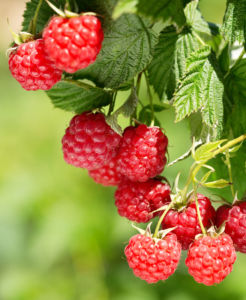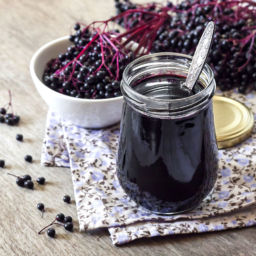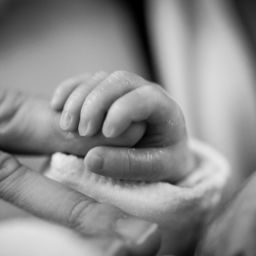
The Use of Red Raspberry Leaf (Rubus idaeus) in Pregnancy
Over the years I’ve found a lot of confusion about the best ways to use red raspberry leaf and its actions on the body. There seems to be a general misunderstanding that pregnant people must wait until the last weeks of pregnancy to drink red raspberry because it might make them go into labor. Red raspberry (Rubus idaeus) is not a “Partus preparator” — herbs that are commonly used to prepare the uterus for a fast and rapid labor in the last weeks of pregnancy like blue cohosh (Caulophyllum thalictroides), partridge berry (Mitchella repens), or spikenard (Aralia racemosa). While red raspberry does have an effect on the uterus, it is in a more gentle manner of tightening and toning that may help to facilitate an easier labor with less need for medical interventions, and can generally start being used earlier in pregnancy for maximum benefits.
To understand red raspberry better, it’s first helpful to know that is an astringent herb. The best way to learn what this means is to have a cup of red raspberry leaf tea. You’ll soon find that your mouth feels a little dryer because of the astringent nature of the tea – it’s the same feeling you might get after drinking a strong cup of black tea or after eating an unripe banana. The tissues of your mouth have been tightened and toned. Even though we feel the effect primarily in our mouths, the tea is having a similar impact on other muscles in our body. This is one of the reasons why red raspberry leaf tea is also a traditional remedy for helping to soothe inflammation in the mouth and throat or even in helping to prevent excess fluid loss from diarrhea. This astringent, toning nature is also happening to the uterus and is probably the main reason why red raspberry leaf seems to improve birth outcomes.
Red raspberry leaves have been used for centuries in Europe and also among Native Americans during pregnancy to help prepare women for birth. Although the exact mechanism for how red raspberry “works” during pregnancy is unclear, it is probably the high levels of vitamins and minerals that help to nourish the uterus while also providing the right minerals it needs to contract and relax effectively as it works to move a baby out of the body. It may also be one of the plant’s chemical constituents, fragarine, which is acting to tone and nourish the uterus.
While we could certainly benefit from additional and more comprehensive research on red raspberry in pregnant women, there are a few studies which have reported promising results. For example, one study (Parsons, Simpson, & Ponton, 1999) looked at a sample of 108 mothers –half of which had consumed raspberry leaf products during pregnancy and half who had not. Those women who had included raspberry leaf in their pregnancies had shorter labors than the control group, were less likely to give birth pre- or post-term, less likely to receive .≤artificial rupture of membranes, and were also less likely to have mechanical or surgical assistance with the birth.
In a second study on 192 women, researchers (Simpson et al., 2001) found no adverse effects on mother or baby, and a significant shortening of the second stage of labor (the pushing stage). They were surprised to see there was no significant difference detected in the first stage of labor in this sample, but there was a lower rate of forceps deliveries in the women who consumed red raspberry than the control group.
In addition to these research results, we have hundreds of years of use to suggest red raspberry’s safety during pregnancy, but to have a full picture of the herb, it is important to point out two studies in rats that have had contrary results. In both studies, rats were given red raspberry in doses that are much higher than humans would ingest. However, Zheng et al. (2010) found inhibition of uterine contractions, and a second study (Johnson et al., 2009) found increased gestation length in rats that had consumed high doses of red raspberry leaf. We have no reason to think these results are definitely transferrable to humans, but we don’t have enough research to say definitively one way or the other. However, we do know that there are many differences between humans and rat and the relative amounts of raspberry leaf consumed was quite different from what most women consume.
So if a mom does want to drink red raspberry in her pregnancy, when should she start taking it? While there’s no reason to think it would be harmful in the first trimester, this is a time of such great change in the body that it’s generally not recommended that any new herbs be consumed during this time. However, most herbalists and midwives agree that red raspberry is appropriate to use in the second and third trimesters (Romm, 2018).
A general guideline is to take 1 -2 cups a day. It can be drunk by itself, but because of its astringent properties, it often tastes better mixed with other herbs like spearmint and rosehips. It can be enjoyed hot or over ice. In The Natural Pregnancy Book, Dr. Romm suggests brewing 4 Tbs. in a quart jar to be enjoyed throughout the day during pregnancy or during labor. Red raspberry has also been traditionally used to help restore the integrity of the uterus postpartum so it can continue being drunk in the postpartum period.
Red raspberry can also be consumed as capsules or tablets.
As a general note, it is always best to check in with your personal provider before incorporating red raspberry products into your lifestyle. And if you ever notice a negative reaction after taking red raspberry, discontinue its use.
Please reach out if you have any other questions about using red raspberry leaf in pregnancy.
References
Johnson, Makaji, & Ho. (2009). Effect of maternal raspberry leaf consumption in rats on pregnancy outcome and the fertility of the female offspring. Reproductive Sciences, 16: 605-609.
Konieczynski, Pawelk, & Wesolowski. (2012). Water-extractable Magnesium, Manganese, and Copper in Leave and Herbs of Medicinal Plants, Acta poloniae pharmaceuitca, 69: 33 – 39.
Parsons, Simpson, & Ponton. (1999). Raspberry leaf and its effect on labour: safety and efficacy. Aust Coll Midwives Inc J, 12: 20-25.
Romm, A. J. (2014). The natural pregnancy book: Your complete guide to a safe, organic pregnancy and childbirth with herbs, nutrition, and other holistic choices. Berkeley: Ten Speed Press.
Romm, A. (2018, October 30). Herbs for an Easier Labor. Retrieved from https://avivaromm.com/herbs-easier-labor/
Simpson, Parsons, Greenwood, & Wade (2001). Raspberry leaf in pregnancy: its safety and efficacy in labor. J Midwifery Womens Health, 46: 51-59.
Zheng, Pistilli, & Holloway. (2010). The effects of commercial preparations of red raspberry leaf on the contractility of the rat’s uterus in vitro. Reproductive Sciences, 17: 494-501.
Looking to purchase red raspberry leaf?
You can buy bulk red raspberry leaf from Mountain Rose Herbs or a Fecundi-Tea blend that includes red raspberry leaf (affiliate links – thank you for the support!).
If you’re in Ohio, I have a Nourishing Pregnancy blend with red raspberry that you might like to try.






